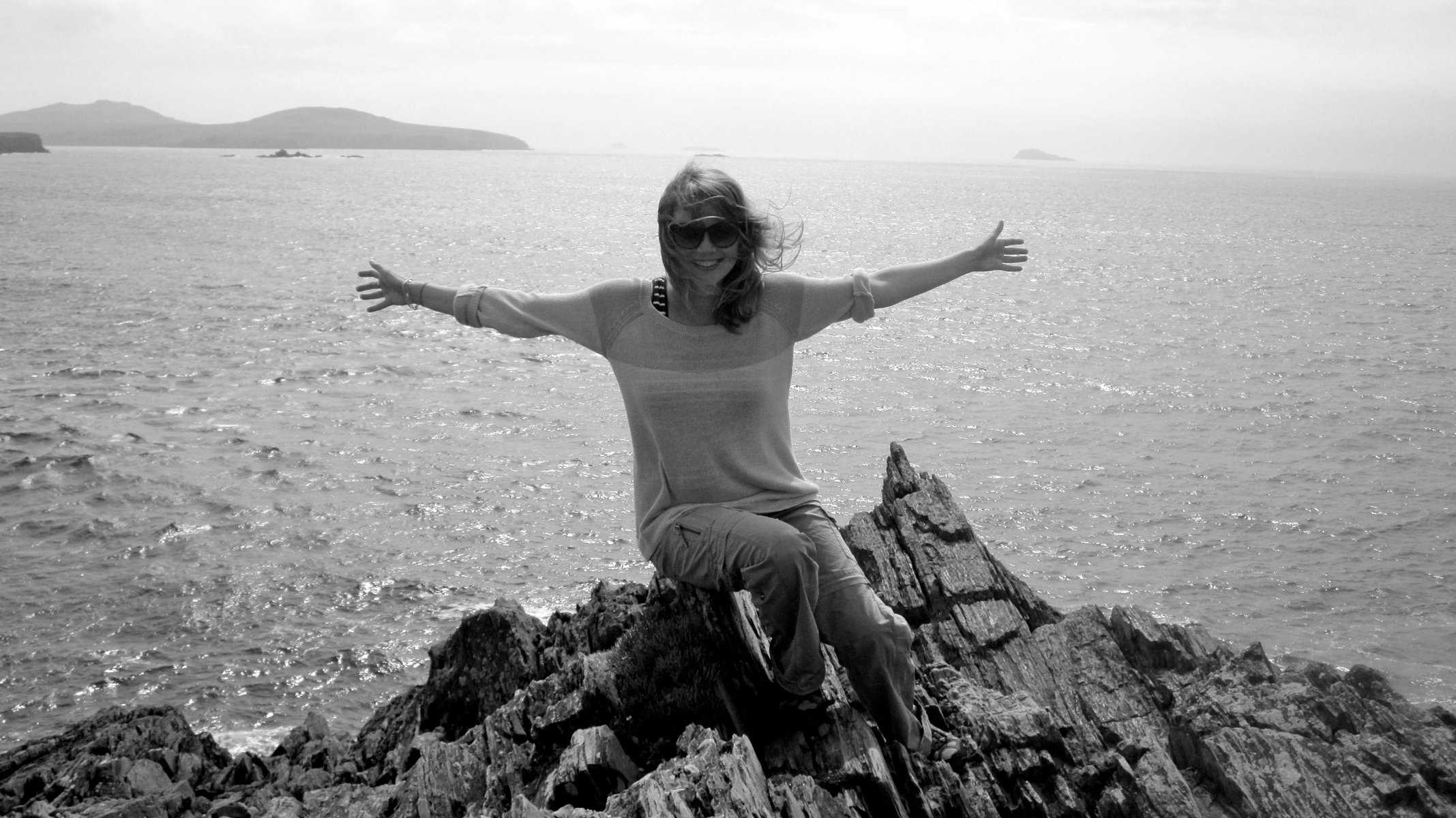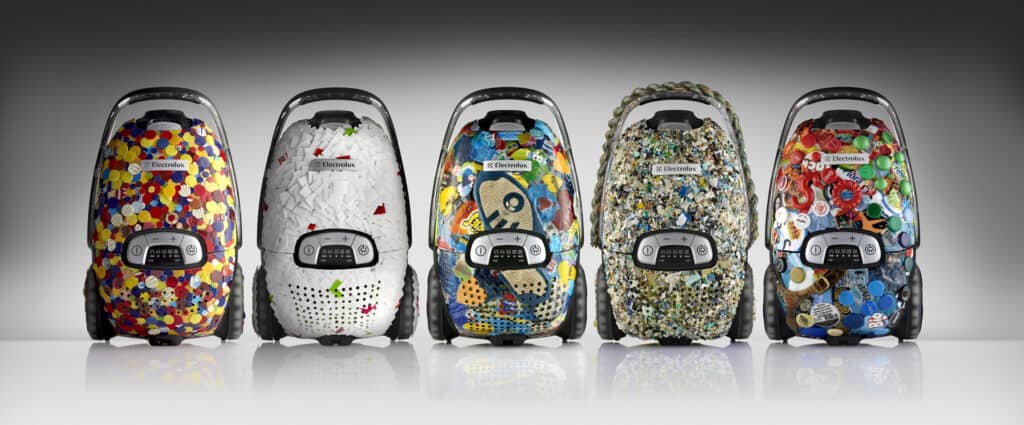What Are We Doing About Our Ocean Plastic Problem?
The great plastic debate is never far from my mind (perhaps for many), with the UN’s World Oceans Day, seeing the Clean Waves Project “Advertising” display by Old Street Roundabout in London and speaking with the documentary makers of Uma Gota when on holiday in Brazil. It feels like you’d have to be under a rock to have missed the growing media around ocean plastic, and our overuse of plastic in more general.
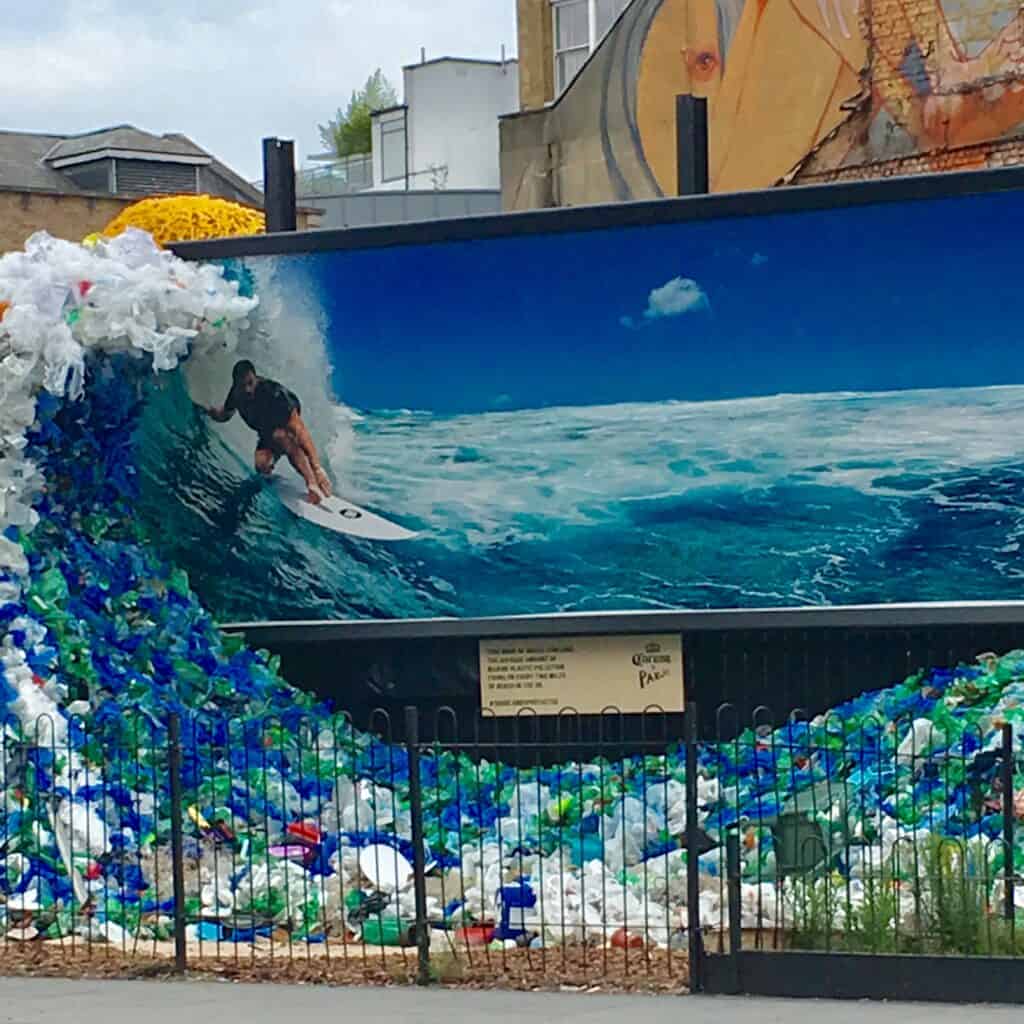
This wave of plastic in the city, is an engagement stunt designed to draw attention to the average amount of marine plastic pollution that is found washed up on every 2 miles of Beach in the UK. Pretty shocking right? Alongside this, it’s a collaboration between Parley and Corona (yes the glass bottled beer that likes to be drunk on a beach). Digging more into the collaboration, they are also making luxury designer sunglasses and for every 100 sold will save an Island.
I have to say I did get slightly lost in the whole story, but overall I think it’s a great way and eyecatching way in engaging many on the issue, beginning to physically display how big the problem is, confronting people with the scale, to spark awareness and interest and hopefully take action on ocean plastics.
Anyway, it got me thinking about the increasing current around this issue over the last years.The systems, products, policies and people, businesses and campaigns at work and arise to come together to make change happen. When the deep science and research, begins to filter and connect to citizens and so-called “influencers” (if you’ve read the Tipping Point by Malcolm Gladwell). How new technology, the rise of social media and platforms, business models and thinking is beginning to create not just ripples, but hopefully waves of change that can not be ignored.
1. Creating a swell of media attention
Ever since the discovery of the “plastic soup” in the middle of the of the Pacific Ocean, there’s been a growing swell of media attention on the issue. More recent organisations such as the Ellen Macarthur Foundation with their New Plastics Economy report highlighted that almost 8 million tonnes of plastic makes its’ way into the ocean every year.
Are we beginning to realise that it’s happening closer to home and is directly affecting us, not a remote island on the other side of the world but that the plastic is in the fish of our coast or in our local rivers which have been found to be teaming with micro-plastics.
The “Blue Planet II” documentary and the adjoining dedication by the BBC of huge amounts of air time and follow-up on the issues highlighted, on their News, Breakfast shows and in particular, follow-up and discussion on the weeknight One Show. This seems to have moved the issue of ocean plastic to a wider audience. Journalist, presenter and Eco expert Lucy Siegel has also been championing the growing awareness of this, moving items covered in her eco guide columns and read in selected circles into the wider general public’s consciousness.
Alongside this the National Geographics recent eye catching “Planet of Plastic Issue, has been getting critical acclaim, graphically exemplifying the tip of the plastic iceberg that we’re becoming aware of. Will it go deeper?
2. Surfing the wave of citizen awareness
As media coverage grows, so does the stronger call and recognition by the general public of some of the issues faced. When combined with other groups and growing communities such as those around Zero Waste living, conscious consumption, ecoliving, the voice becomes even stronger and difficult for policy makers and businesses to ignore, recognising that they need to cater for our demand for action on plastics and pollution.
Now different plastic products are being targeted one by one and action taken on the likes of microbeads in face washes, single use plastic bags, taxes on coffee cups, to plastic straws in drinks and a general call for reducing plastics used in packaging for a whole range of products.
Hopefully these single actions will begin to be linked, combined into much bigger picture and lasting sustainability, economic, system changing strategies.
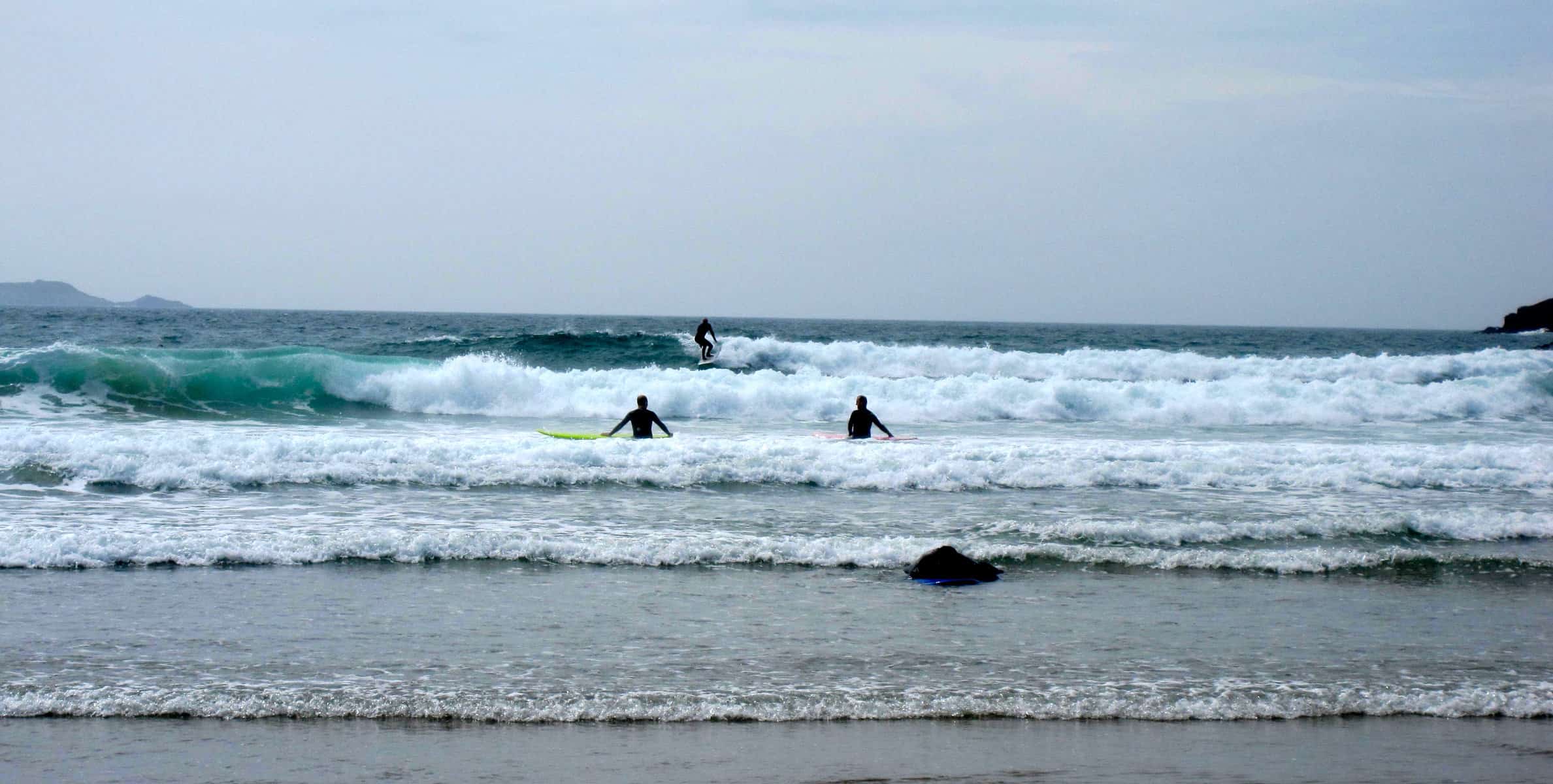
3. An Ocean of Plastic to make products from
As a product designer with a particular interest in materials and resource use, recycled plastics have always been something that I’ve considered or used. Even in University, I designed a concept pedal powered craft, sort of like a hybrid surf board and pedalo and I found out that I could use recycled plastic from kayaks to make it. A kind of closed loop kayak concept.
Working as an ecodesigner of Vacuum cleaners I came across the Electrolux Vac from the Sea initiative. The ambition was to create a range that was made from plastics collected from different parts of the Worlds oceans. As it developed however, they realised the collected plastic was difficult to trace back to its origins. This made the plastic difficult to separate and test for potential toxicity to satisfy health and safety product standards. Instead the outcome became a set of concept vacuum cleaners to highlight the issue. Using recycled ocean plastic is not easy.
Alongside all those plastic bottles and straws escaping into the ocean, one of the big areas of plastic and wider pollution in the seas and oceans, is from the fishing industry. Here a range of their everyday tools end up getting lost or discarded into the ocean, their fishing nets becoming Ghost Nets or Ghost Gear. Spooky!
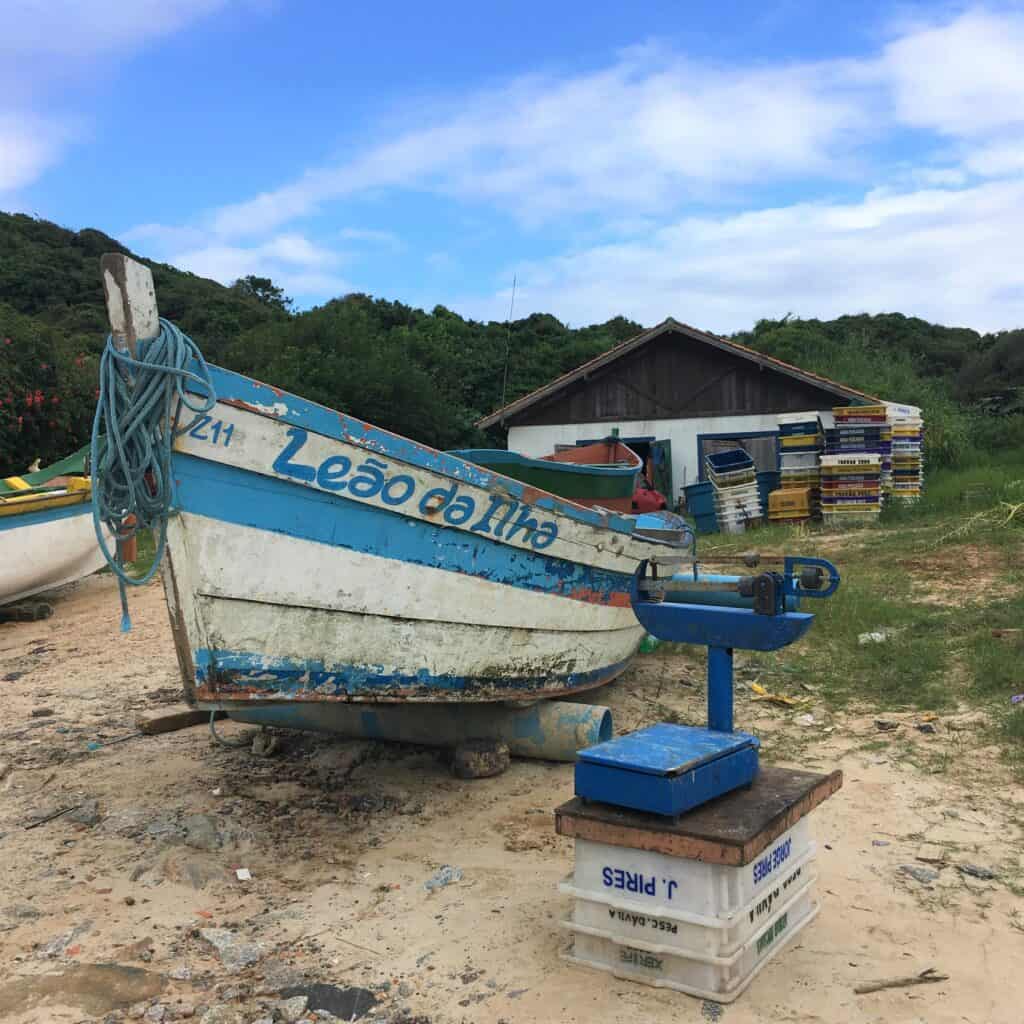
This particular type of marine litter has been tacked by a range of organisation and products. One of the reasons being that most fishing nets are made of Nylon and saw that the material can be fairly easily distinguished and separated, getting over the issue that Electrolux faced years ago.
Probably one of the most notable organisations here is Aquafil, a leading manufacturer of Nylon 6 fibres and polymers, who invented and commercialised the Econyl fibre made from recycled fishing nets. This material has now gone on to become a base fabric for many of the ocean plastic fashion and home style brands.
Sustainability pioneering businesses, such as the carpet manufacturer Interface have collaborated to form projects, such as Net – works with ZSL to build and scale collection and supply chains of waste fishing nets with communities around the world. Their video with the National Geographic covers the project in the Philippines where they convert plastic fishing nets to carpet.
An EU collaborative project called Circular Ocean, has a great overview of organisations working in the area of design with ocean plastic and businesses developing products. They’ve also launched an open source platform to collaborate on potential concepts and solutions further.
Some of the businesses already using ocean plastic include:
- Bureo, who make skateboards and more recently Jenga out of recycled fishing nets
- Parley who created a trainer with Adidas
- Finisterre swimwear using Econyl
- Pioneering eco washing and house cleaning brands Ecover and Methods Ocean Plastic Bottle
One of my favourite fishing net based products is from sea2see Eyewear. I actually Kickstarter funded them in 2016, attracted by their great circular economy storytelling and clever naming. The sunglasses are also great and a useful practical example to hand of a sustainable business model connected with it’s mission, values and customers. They work with local fishermen to collect the nets, recycle them and then make sunglasses and glasses using traditional methods in Italy. Stay tuned Javier Bardem is now also an ambassador!
Artists and campaigners are also creatively drawing awareness to plastic in the ocean and seas, making and creating such as Kittie Kipper who specialises in re-purposing fibre found from the ghost gear or ropes she finds, looking to “weave the seas clean” in collaboration with Catchplastics.
While Sea Stuff artist, Kate Blair makes everything out of solid broken pieces of marine plastic that she finds washed up on beaches near her home.
4. Getting On the Beach and In the Waves
Around the world thousands of community based and worldwide NGO’s, volunteers and concerned citizens get out and clean up beaches and floating plastics and litter on their local seas and oceans, out of their own initiative.
The Marine Conservation Society has done amazing work for years on campaigning for the sea and our oceans, also contributing to UK and EU policy recommendations on the issues faced. A particular useful insight they’ve gained is on the types of litter and plastics found from their Beach Cleans. Using citizen science and reporting from volunteers, they’ve been able to give a clearer picture of the products that are polluting and where they probably come from.
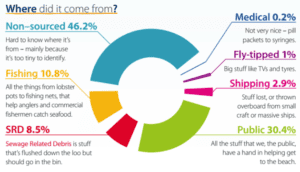
Similarly Surfers Against Sewage and #2minutebeachclean engage people in action while also raising awareness and campaigning . If you’re looking for eco-living goodies to support shifting to a more plastic free lifestyles the SAS shop has some great products that will also support funding the cause.
A particularly great initiative I’ve seen (remember that Kayak I talked about at the beginning) comes from a collaboration between Fathoms Free and Keep Britain Tidy’s BeachCare programme. Here the plastics collected during beach cleans have been sorted, cleaned, recycled and then made into HDPE pellets to be remolded to make ocean kayaks that can then be used to do clear ups!
Thinking on a big scale and cleaning the ocean, The Ocean Clean Up is a startup that aims to attract and clean up the plastic using a large device floating in the ocean. It’s currently going through larger scale trials now, so will be interesting to see how this approach develops and if there may be any other potential consequences.
5. Thinking and Swimming Upstream
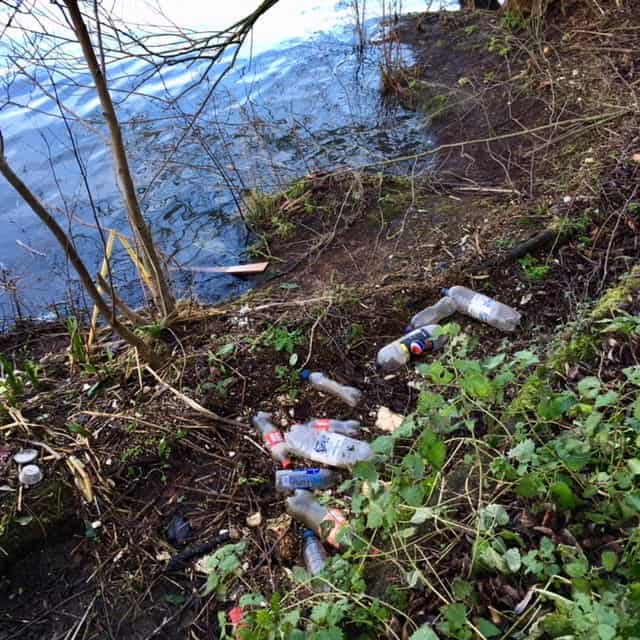
One way of dealing with Ocean Plastic is to stop or reduce the chance of it getting there in the first place, looking at the systems, leakage points, and root causes. Products designed to stop it getting there, products perhaps redesigned without plastic and policies, regulations, campaigns that support reducing and rethink our plastic use and disposal. Alongside recognising that much of it comes from the land and floats down our rivers. So can we start thinking and acting more upstream?
Two products that specifically look at micro plastics are the Guppy Friend & Cora Ball. These both target stopping the micro plastics from synthetic clothing fibres escaping down the drain from washing machines. Ones’ a bag that you would put the relevant clothing items in, and the other, a type of ball inspired by corals design and absorbing capacity, that attract the particles and cleans the water.
The Big Ocean Plastic Dream?
Ultimately, like a lot of products made out of ocean plastic waste, and campaigns activities against it, the big dream? Well that they don’t need to exist!
That there isn’t plastic in our oceans or washing up on to our beaches. That the plastic that we do use, and when it’s used, is carefully considered for a real purpose throughout it’s lifecycle.
Because shh (for many purposes it’s a brilliant material).

But we’re a long way from the shore on that still and there’s still a backlog of plastic in our oceans to deal with and clean up. So let’s hope this current wave of plastic awareness and action doesn’t retreat like the tides but really begins to swell into something much much bigger and deeper.
A combination of Products, People and Policies for creating a sustainable approach and positive change on Ocean Plastic Plastic is needed
So what are you waiting for? It’s time to get on board.
………………….
Interested in more sustainable design tips and methods then check out:
5 Everyday Tips for Supporting Sustainable Change Everyday
And let me know if you’ve got any other great examples (or ocean based plastic puns)
